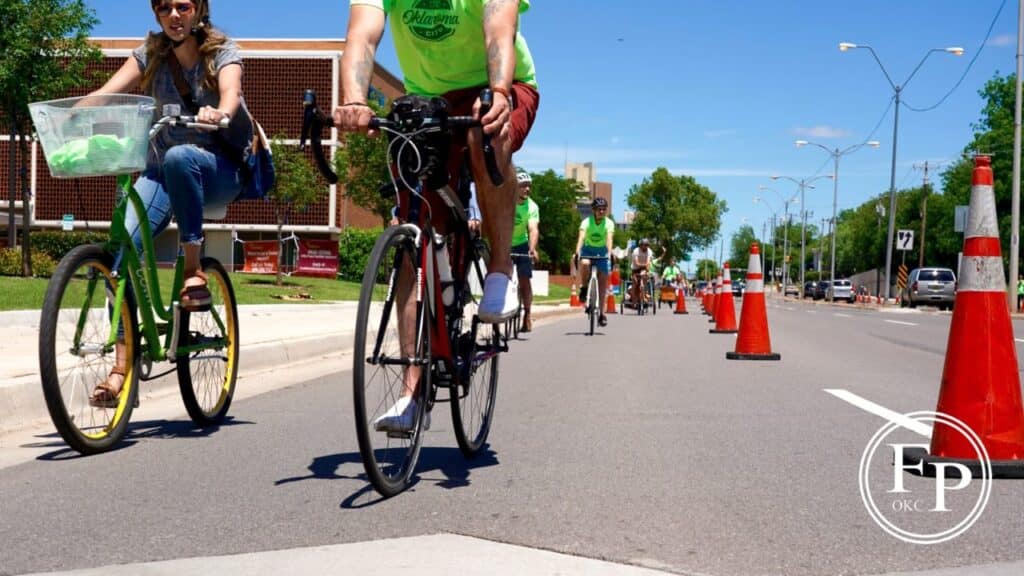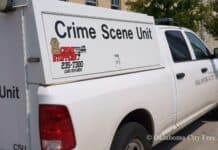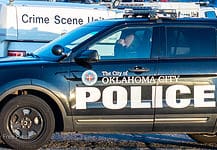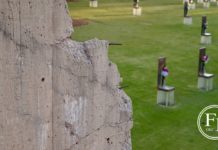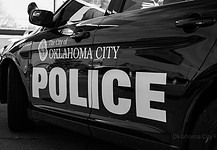Last Updated on September 14, 2019, 9:32 AM | Published: May 19, 2019
Around 100 people, mostly bicyclists, gathered in McKinley Park near NW 13th and Classen Blvd Sunday advocating deeper development of a safer city through its infrastructure.
The two simultaneous events were called “Every Street a Safe Street” and “Critical Mass Bike Ride.”
And the concern is there, right down to neighborhood and street level.
Classen is “harrowing”
For years families and individuals trying to use Classen Blvd or cross it on bike or walking have lived in fear of the intensity of traffic on the six-lane thoroughfare that winds roughly north to south from the near north side of Oklahoma City to SW 5th west of downtown.
Dan Morris and his wife, Annie brought their four children with them to the gathering because they live in the area, are committed to riding bikes when they can, but see the many dangers right now in a city that is mostly designed for quick automobile travel.
“Our biggest thing right now is getting across Classen,” said Dan Morris. “Crossing Classen for us, with four kids, is harrowing.”
He said that even though they have spent many hours teaching their children bike and pedestrian safety, the intensity, the six-lane width and
And even though the speed limit is 35 miles per hour, which is high for an area with bike and pedestrian traffic, “no one drives 35,” Morris said.
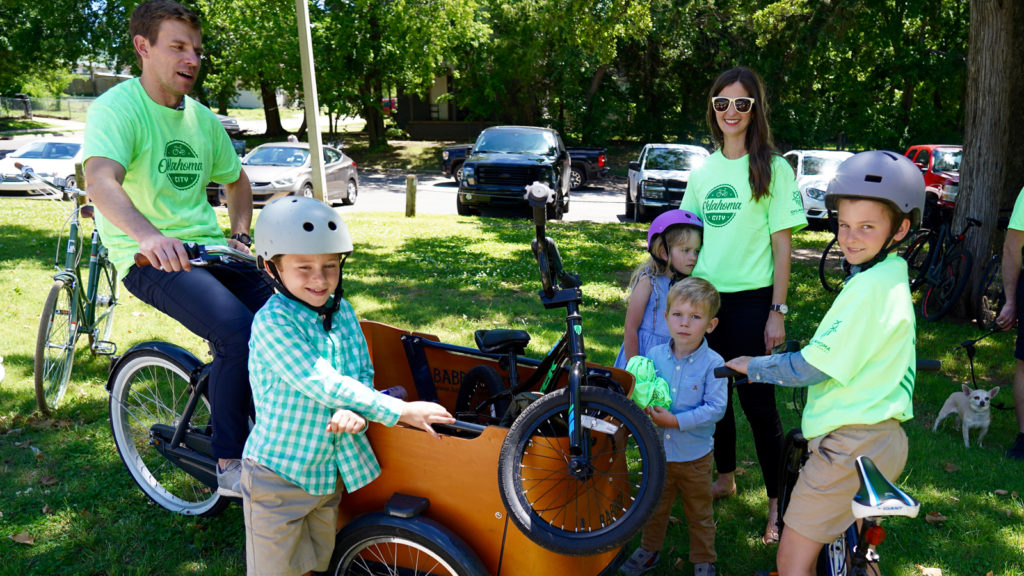
The mother of the four children, Annie Morris, was even more blunt about the challenges of having small children walking or on bikes around Classen.
“It’s horrible. We have to do it all the time,” she said. “It’s nerve
The turning right and looking left problem is one that is created by state and city traffic laws that allow right turn on red after coming to a stop.
Drivers who are trying to get to their destination quickly are looking left when they are about to turn right, which means they are not looking toward the crosswalk in front of them.
Indeed, this reporter and another person today had to hop back to keep from being hit by a driver looking left instead of into the crosswalk at 13th and Classen even though we had the “Walk” signal directing us to cross.
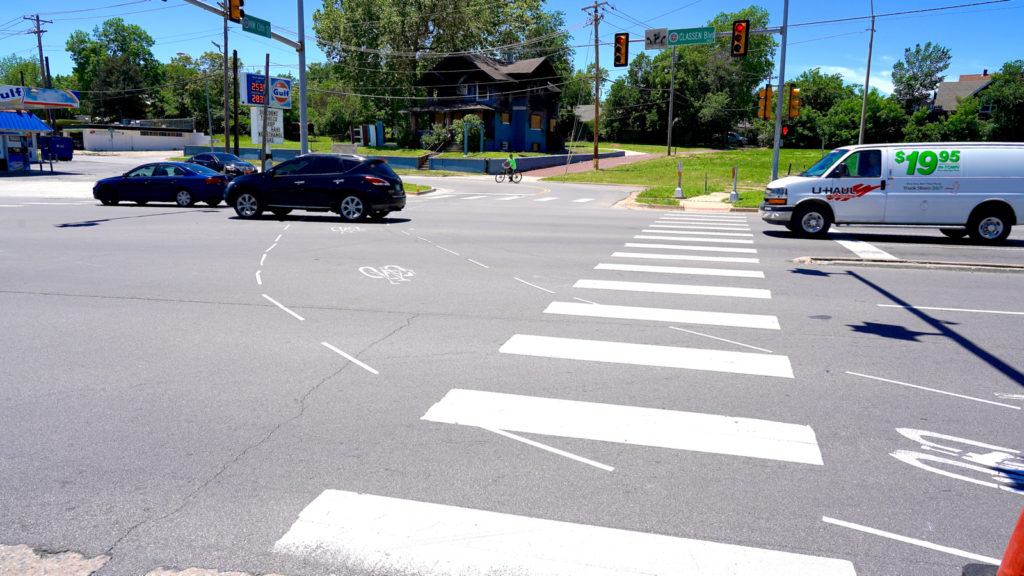
In March, a beloved chef, Chad Epley was killed in an accident with a car at 16th and Classen as he rode his bike home late in the night. Bike commuting was usual for him as it is for many people in the service industry who cannot afford a car.
The incident heightened fears of the street which had already been high. A Ride for Chad Epley was held earlier to begin a movement demanding safer streets in Oklahoma City.
Councilwoman Hamon
Two City of Oklahoma City Council members were present for the event: Ward 6 Councilwoman JoBeth Hamon and Ward 2 Councilman James Cooper. Both were recently elected to their posts.
Hamon talked to Free Press about the need to make the city a place where people have more choices about how they travel.
“To me, it’s always been about balance and having streets that serve a wider set of modes of transportation,” said Hamon.
“Recognizing that the way we built our city, it forces people to have fewer options. So the people who have no options are forced out on the roads that are unsafe. And then the people who would like the option of biking don’t feel like it’s safe, so they just default to their cars.”
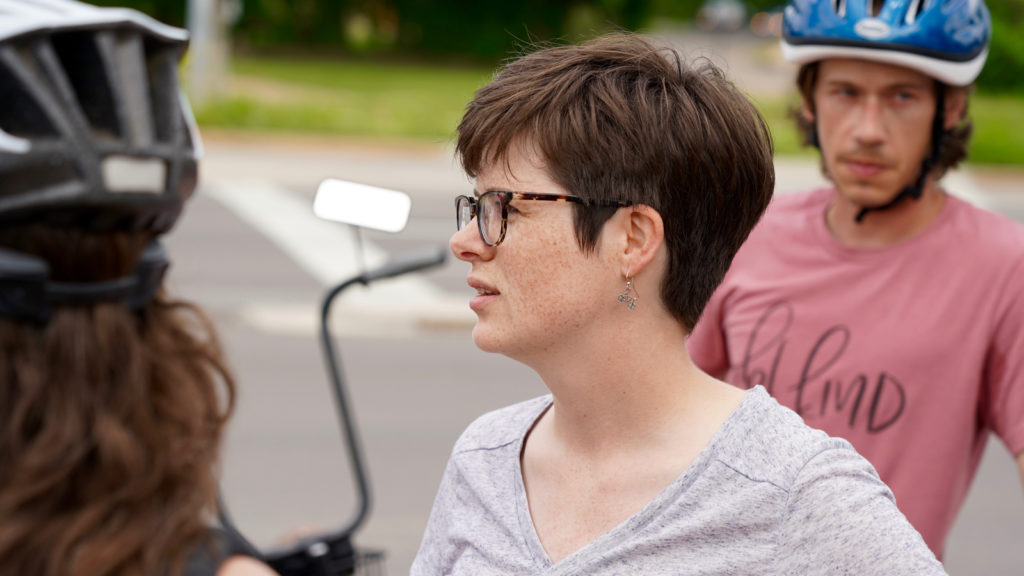
We asked her about how the conversation inside City Hall might be able to change about a broader range of transportation options she is advocating.
“I think part of it is that in the past cycling or cycling advocacy has been largely seen as recreational. And so there is the conversation in City Hall but it will usually default to trails and sorts of things that are on the periphery of the city.”
She said the value of the events today was to show residents and city leaders that people who walk or bike are “not a minority.”
Also, there are many people in the city who simply cannot afford the ongoing costs of owning a car, said Hamon.
“So,it does become like a big equity issue for me,” she said. “It’s always been about the equity issue.”
Councilman Cooper
Ward 2 City Of Oklahoma City Councilman James Cooper spoke to the crowd at the beginning about the necessity of many people being involved in the formation of the city as it grows.
“I took that position because I believe right now we are at an inflection point, a crisis point with our education and our neighborhoods in Oklahoma City,” Cooper said standing on a picnic table in the center of the crowd. “I ran because it’s time to create a better environment for the kids who call this place home.”
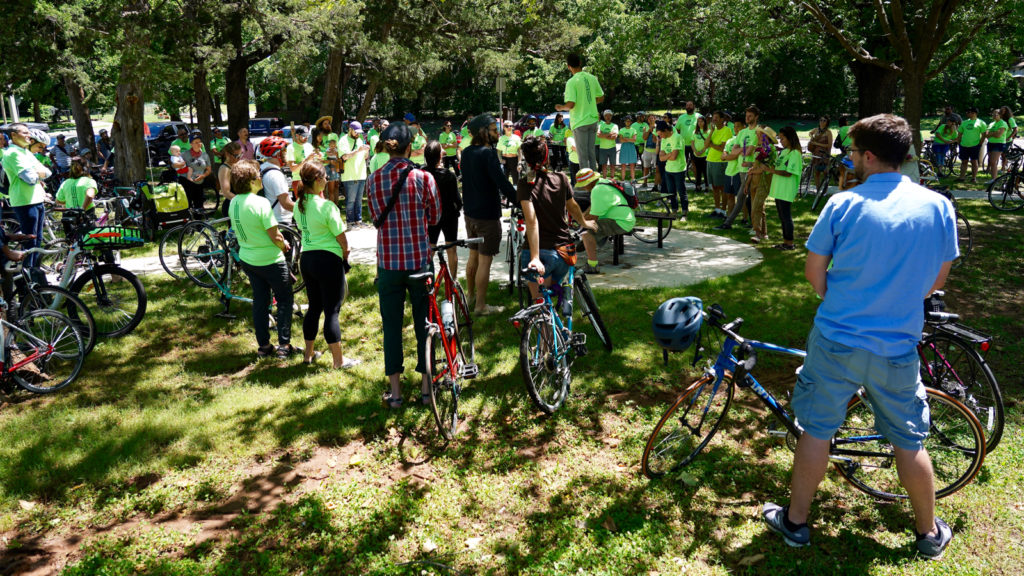
In most of his speeches, Cooper invokes the past and how the city once upon a time had a viable streetcar system and was careful to build sidewalks. And he contrasts that older Oklahoma City to the one that developed with mostly the automobile in mind after WWII.
He challenged the group to be active and make their ideas known to the leaders of Oklahoma City.
“We must rewrite the history of this city with a future that says the city will be for all of us, every single one of us who walk, bike, ride the bus, who take a street car, who move around the city and call it home,” Cooper shouted. “This is our vision. We start there and we have the city compromise with us going forward.”
The crowd cheered and clapped several times during his speech.
New task force
Cooper told Free Press after the speech that he and Councilwoman Hamon are on a new task force that has been formed “specifically for a pedestrian and bike infrastructure.”
“We’re going to be focusing largely on the inner city, which is where the need is the most and where the city has already through Bike Walk –
Protected bike lane demonstration
The group then rode to Classen Blvd where organizers had permitted through City of Oklahoma City to put traffic cones down and block off the outside curb lanes in both directions of Classen from NW 13th St. to NW 16th St.
Oklahoma City Police officers were present with patrol cars at either end of the protected lanes with motorcycle units patrolling the route to make sure auto drivers were aware of the change in traffic.
Some volunteers stood along the lines of cones and wore bright florescent green shirts given out earlier to make car drivers aware of the protected lanes.
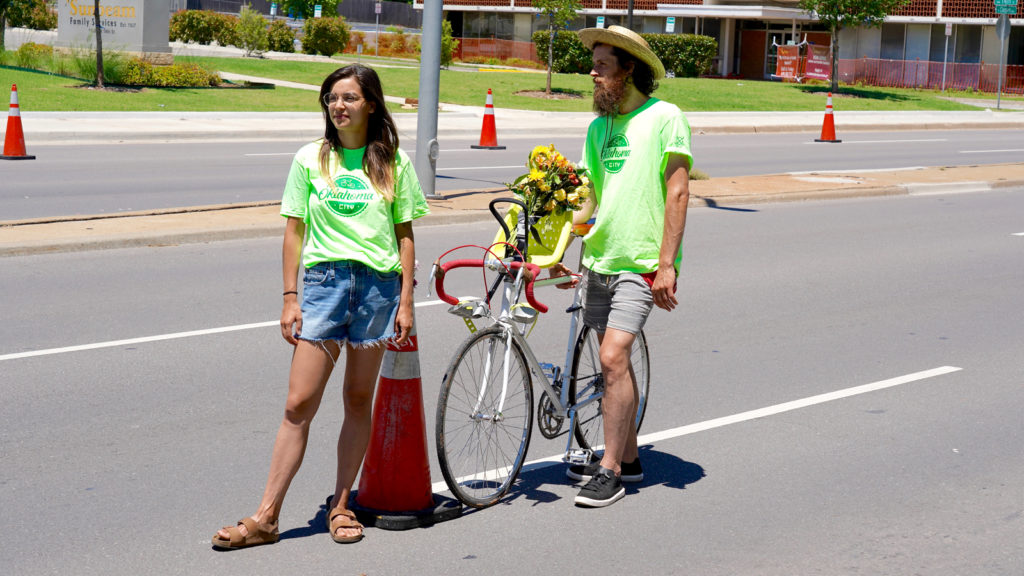
No dangerous incidents were reported by anyone we talked to along the route.
After about 30 minutes of riding up and down the bike lane demonstration routes, most of the riders began to go home and organizers started picking up the cones.
One of the organizers, Ben Nockels, talked with Free Press about how the bike lane demonstration went.
“I think part of what this is, is you’re having to create a culture for the very first time,” said Nockels.
“So, Oklahoma City has had a cultural void in many regards – certainly with kinds of bikeability, walkability and just general pedestrian safety. So it’s like this is as much for people in cars as it is for people on bikes.”

He said he is observing a positive interaction between those who are pushing the city to develop better walking and biking infrastructure and people at City Hall.
“It really is a friendly conversation,” Nockels said. “We’ve got city leadership from the mayor on down [involved], including a few new council members.”
“You know, this is not going to be an uphill battle in terms of that inner circle and public perception. We’ll keep doing these kinds of demonstrations to keep the conversation a part of the public discourse.”
Founder, publisher, and editor of Oklahoma City Free Press. Brett continues to contribute reports and photography to this site as he runs the business.
